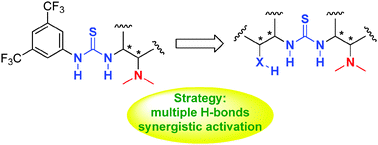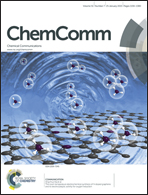Recent advances in asymmetric organocatalysis mediated by bifunctional amine–thioureas bearing multiple hydrogen-bonding donors
Abstract
Organocatalysis has proven to be one of the most rapidly developing and competitive research areas in asymmetric catalysis since 2000, and has become a third branch besides biocatalysis and transition metal catalysis. In this feature article, recent progress from our research group on asymmetric organocatalysis, focusing on fine-tunable amine–thiourea catalysis, is described. Design of novel bifunctional amine–thiourea organocatalysts based upon the synergistic activation strategy via multiple hydrogen bonds and their applications in asymmetric C–C, C–N, and C–S bond-forming reactions under mild conditions are discussed in detail. The most attractive feature of the newly designed fine-tunable amine–thiourea catalysts is the incorporation of multiple hydrogen bonding donors and stereogenic centers.


 Please wait while we load your content...
Please wait while we load your content...